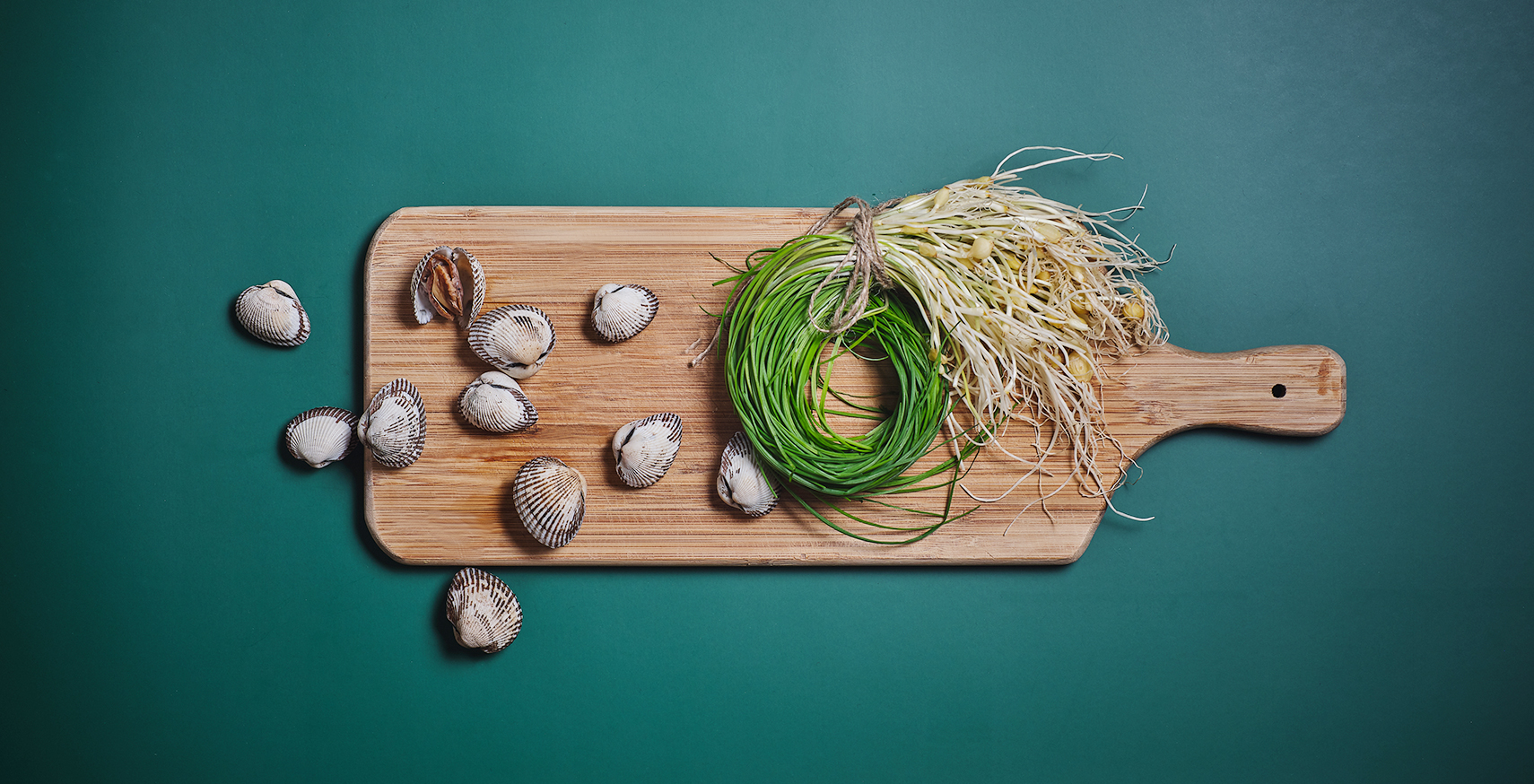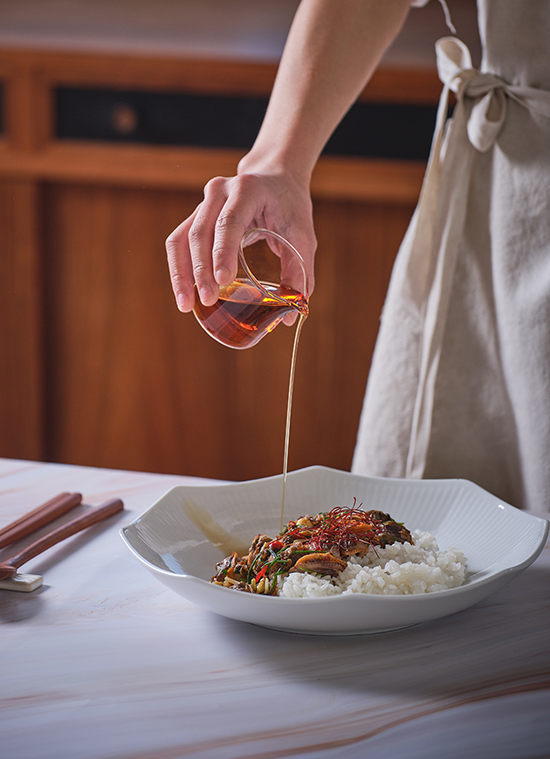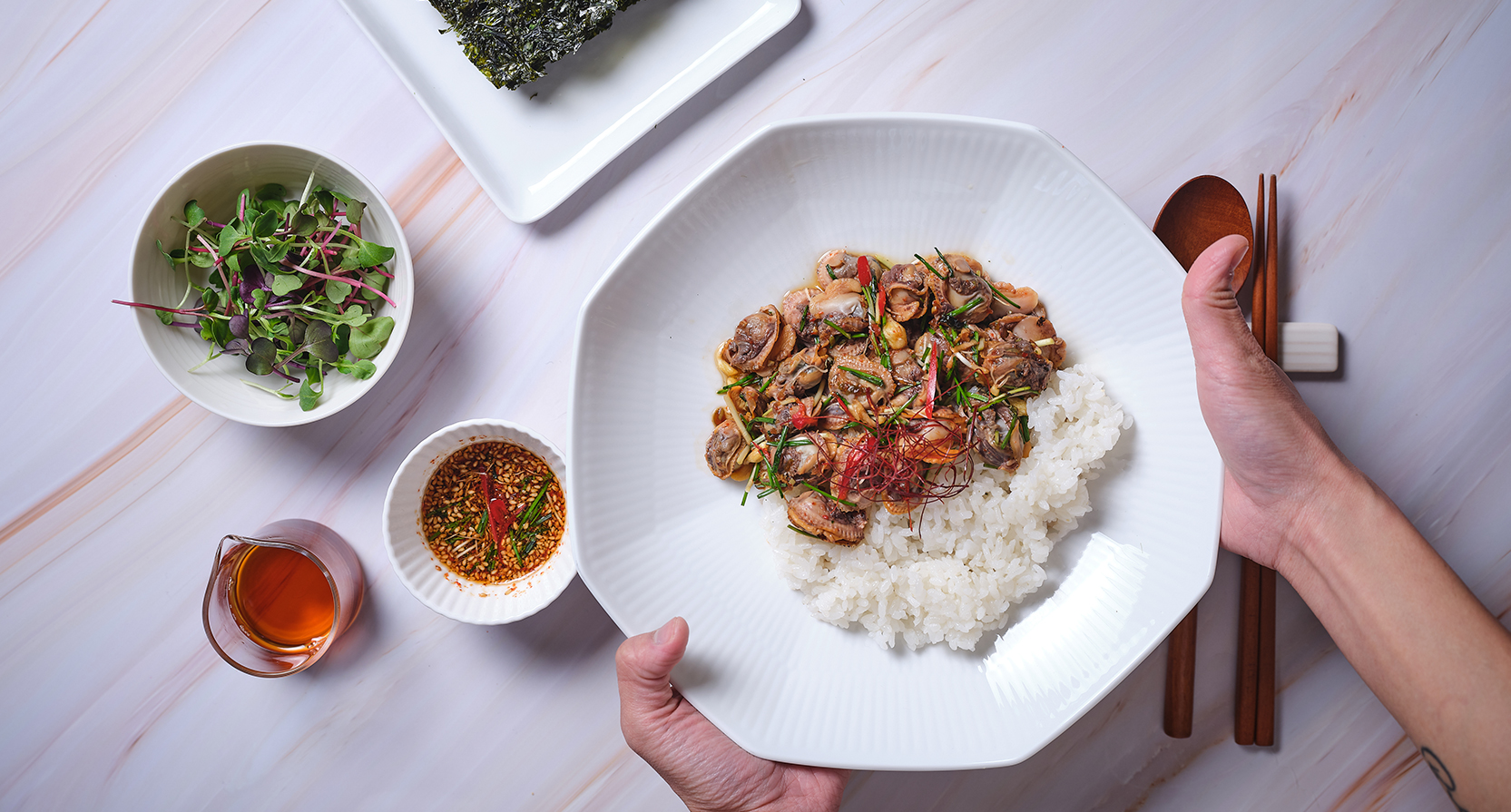March 2021

March 2021
It is only fitting that Korea, a nation with distinct and beautiful four seasons, flaunts unique dishes that tingle both your palette and senses. For March which marks the onset of spring for the Korean peninsula, cockles and wild chives are in season; together, they represent a well-rounded, complementary mix of the ocean and the mountains, a reflection of Korea’s topography.
Written by
Yu Pureum
Photographed by
Studio Kenn

Ethnic Hansik colloquial sayings oftentimes equate ethnic Hansik (Korean food) to medicinal nourishment. Each ingredient was considered special for its own set of nutritious content. Accordingly, seasonal food seeped into ethnic Korean eating customs. Every season has a range of ingredients that reach peak or optimal state both flavor and nutrient-wise. For such reasons, seasonal food became dubbed ‘boyangsik,’ meaning foods that recharge one’s force and energy. Let us introduce you to springtime foods that come March in Korea, reach their prime.
Bibimbap is astoundingly transformative. It indeed, takes on limitless variations. Atop rice, which is an obvious Korean staple capable of complementing all or any sort of sauces, one can hardly go wrong with toppings of namul (root-based plant side-dishes) plus saucy, meaty or such spice-filled combination.
 © de ra Serna (YouTuber)
© de ra Serna (YouTuber)

But cockles (kkomak) and wild chives (dallae), it must be said, deserves a deeper and more proper mention than bibimbap (a relatively familiar dish for many) than merely as one of limitless bibimbap variations. Cockles are mudflat delicacies, and the nomenclature stems from ancient colloquial speak of the Gyeonggi-do Province region (up north). While the ‘standard (Seoul-centric, officially considered Korea’s default) dialect’ dubbed cockles ‘gomak’ (not ‘kkomak’ or ‘ggomak’), novelist Jo Jung-rae’s “The Tae Baek Mountains” (1986) deployed the rural term ‘kkomak’ (‘ggomak’), and insisted against repeated requests from the National Institute of Korean Language (NIKL) to alter the novel’s usage of the term to its standard version. The anecdote goes that after he resisted NIKL’s pleas, the NIKL succumbed as to add kkomak to their official glossary of nouns. Talk about clout, especially that of a cultural (in this case, literary) work of art.
Both cockles and wild chives offer
rare nutrients not easily found
in other such spring ingredients.

According to the National Institute of Fisheries Science (NIFS), oysters and cockles seafoods that had been consumed on the Korean peninsula the longest. The Veritable Records of Taejong (Taejong Sillok) from way back in the Joseon dynasty attest to the reproduction of cockles in the Yeojaman gaetbeol (mudflats) of Yeosu, Jeollanam-do Province in 1431. It is said to have been specially reserved for the consumption of royalty or the elite classes, not to mention preciously regarded as to make frequent appearances in emperors’ meals.
As you probably saw coming: the time has come for us to acknowledge spring flora, especially dallae that bloom in fullness in March and April. They originate from the Far East Asian region at large, including Japan and China in addition to Korea. In those regions, dallae blossoms are easy to spot during the two months of spring. Known not only for their rich nutrients, dallae are said to trigger appetites as counter effects against springtime lethargy.